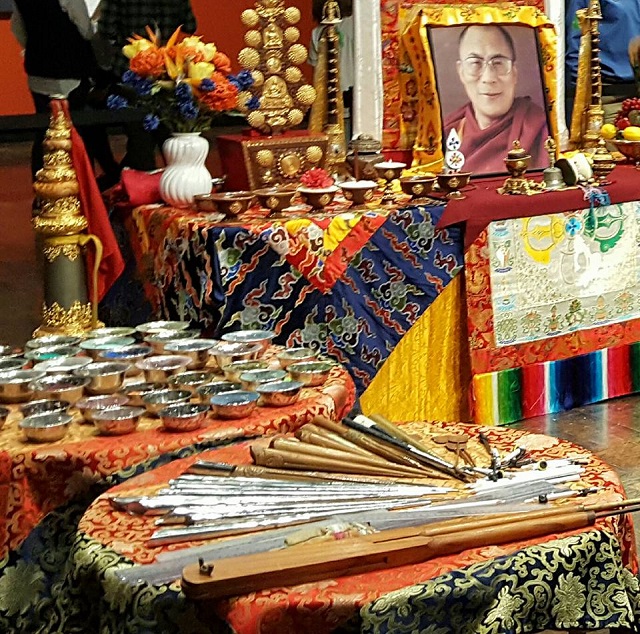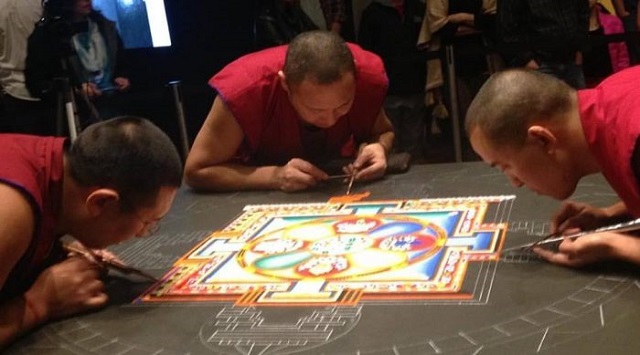
I’ve often said that nonattachment is the most challenging part of the Buddha’s teachings.
It’s human nature to form attachments that stem from earthly desires. We fall in love with other people, ideas, beliefs, possessions, jobs, pets, coconut-milk-chai-lattes and all kinds of things.
We love those things. We want them to last forever, and when they don’t—we suffer.
Buddha taught us that we must master our minds, in order to master our desires—and therefore, we must master our natural propensity toward attachments. When we succeed in this, we can enjoy a life free from suffering.
If this is part of your spiritual practice, you’ve probably noticed that it can be damn near impossible to do. We can get so consumed with our day to day reality—so invested in our relationships, careers, statuses and so on—we forget how temporary they are. (And how temporary we are.)
This might sound like bad news, because it means the good things in life we cling to could be taken from us. That really sucks, because we get so attached to those things—and when they go away, it hurts.
Thankfully, our suffering is also temporary. Our sickness, sadness, loneliness, pain and worry are as fleeting as the moments of bliss between them. Absolutely everything in life is subject to change at any moment. Our ability to flow with life ultimately determines how much (or how little) we suffer.
This weekend, I had the exquisite opportunity to watch seven Buddhist monks construct the “Mandala of Avalokiteshvara”—the bodhisattva of compassion.
It is a beautiful ritual, in which millions of grains of sand are carefully placed by hand to form the intricate design. The monks spent five days constructing the mandala at the Frist Center for the Visual Arts in Nashville, Tennessee.
Traditionally, the beautiful sand painting would be destroyed almost immediately upon its completion. This one will remain on display until May, so we can admire the hours of meticulous, gorgeous work that has been gifted to our city, if only for a moment.
On its final day, the monks will return to destroy the mandala they spent five painstaking days carefully building. Part of the ritual is sweeping up the sand and collecting it in an urn. It will be taken to the ocean and scattered—spreading love and compassion around the world as it travels with the tides.
I spent a couple hours watching the monks work this weekend. I’d spoken to a few friends during the week about going to witness this rare event, but something urged me to go by myself. I couldn’t get there fast enough on Saturday. My soul was aching for this experience.
Naturally, I couldn’t help but take some pictures and video. But eventually, I settled in and forced myself to silence my cell phone and put it away. I wasn’t there for the photo opportunity, no matter how irresistible. I wanted to engage and be present in those moments.

I fell into a gorgeous meditation. With my eyes open, the sound of the monk’s tools clicking, scraping and tapping millions of grains of sand expertly, my chest moving rhythmically with my breath and my feet rooted firmly to the earth below me—I bathed in the deliciously peaceful energy that seemed to fill the space around this amazing ritual.
It was exactly what my tired spirit needed.
Lately, I’ve been suffering from major burnout. My first clue was when I became ill in December for the second time in a couple of weeks. I hadn’t been sick in years. During the second round of sickness, I was forced to lie around and rest—something I am terrible at doing. While recovering, I noticed that my jaw ached on the left side.
The pain continued after my sickness subsided, and I remembered that I had an impacted wisdom tooth on that side, so I scheduled an appointment with my dentist. Two weeks later, I was in surgery. I needed the wisdom tooth and the tooth next to it extracted. It took more than a week to recover from the procedure, which meant more lying around resting. I took pain medication and slept a lot. But in my more lucid moments, I did a lot of thinking about life too.
I thought about how out of touch I’ve been with my body. She had to get sick twice to get me to slow down long enough to realize I was in pain, due to the chronic infection around my impacted wisdom tooth.
At my pre-op visit with my regular physician, I asked him to check my thyroid levels, as I realized I had all the textbook symptoms of hypothyroidism as well—from the dry skin and decreased energy levels to the weight gain and sluggish digestion. My self-diagnosis turned out to be correct.
The teeth are symbolic of the roots of our lives. The thyroid is symbolic of the bridge between the heart and head. It took two illnesses and a surgery for me to be still long enough to realize that I am feeling burnt out because walking two paths in life no longer serves me.
The sickness in my body is a physical manifestation of the energetic message she is sending me—it’s time to unite my head and heart again, and focus more completely on my dharma.
It’s time to leave my corporate job, and focus on sharing my story to help others.
Watching the monks for those precious moments reminded me so vividly that it doesn’t matter how hard we’ve worked, or how much time we’ve invested in building something. Everything in life is temporary, fleeting and absolutely not meant to last forever.
The more attached we become to temporary things, the more we suffer.
The monks will exude the same joy in dismantling their beautiful creation as they did while creating it. They understand that because of the temporary nature of life itself, clinging to that piece of artwork will only cause them pain, as all attachment does. And as they sweep up those millions of tiny grains of sand that they worked so hard to perfectly place in their gorgeous symbol of love and compassion, they see the lesson and purpose for its end.
Perhaps sprinkling that magical sand in the ocean is the most beautiful part for them. While the mandala is on display in Nashville, it brings beauty to those of us who come to admire it. But when it is released into the ocean, it travels on the currents to bring love to the entire world. How cool is that?
When we think about life this way, it’s easy to see that what we cling to is an illusion.
The status and security of my corporate job is no more permanent than the sand on the table in that museum. Clinging to it is literally creating sickness in my physical body. It’s creating an energetic block between my logical brain and its attachments, and the impractical wisdom of my heart, as she whispers that the time has come to make some new choices and plant my roots more mindfully, so that I may fulfill the purpose of this earthly incarnation.
With gratitude, I choose to release the attachments that bring me pain. As I let go, I trust that life will support my journey. With love, I appreciate the message of the seven men who spent five days playing in the sand to demonstrate how perfectly impermanent this human experience is. With great joy, I move in the direction of my dharma, that I may fulfill my soul’s purpose on earth while bringing love and hope to those who need it most.
~
Author: Renee Dubeau
Image: Author’s own
Editor: Yoli Ramazzina

 Share on bsky
Share on bsky






Read 1 comment and reply